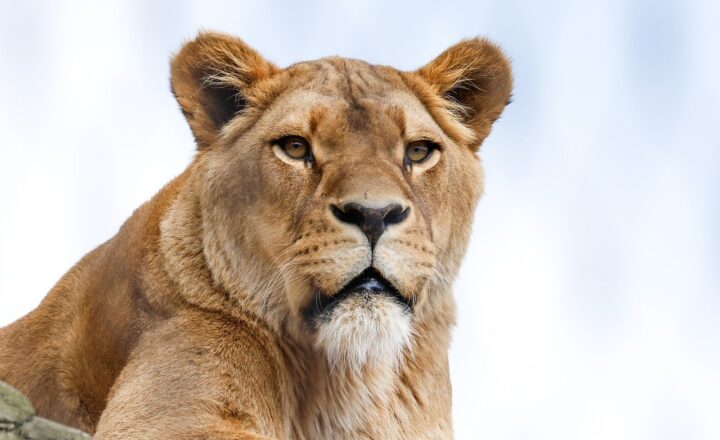
In the annals of human history, many curious practices have emerged that invite both intrigue and bewilderment. Among them is the peculiar phenomenon of animals being tried in courts of law. One of the most notable examples comes from the Medieval period, where roosters found themselves at the center of significant attention. This article will unravel the fascinating history behind the trials of roosters, exploring the social, cultural, and legal implications of such events.
1. The Medieval Legal System: A Brief Overview
The Medieval legal system was an intricate web of customs and regulations, often shaped by local traditions and the influence of the church. Trials during this period were not confined only to humans; animals, particularly domesticated ones like cattle, pigs, and even birds, could be the subject of court proceedings. The rationale behind this practice stemmed from the belief in animals’ capacity for wrongdoing, often framed in legal terms similar to those applied to human defendants.
In these courts, animals could be prosecuted for crimes such as property damage, injury to humans, or, as we shall see, even for murder. These trials were not a mere spectacle; they held significant social meanings, reflecting the values and beliefs of the time.
2. The Rooster Cases: Notorious Incidents
The use of roosters in legal proceedings is perhaps most famously encapsulated in the case of *The Rooster of Bury St Edmunds*, which took place in 1474. The case involved a rooster accused of laying an egg, which the church deemed unnatural and a sign of witchcraft. This bizarre claim was serious enough to draw the attention of the local populace and ultimately culminating in a mock trial.
Similarly, there are records of cases where roosters and other animals were implicated in more serious offences, such as attacking and injuring humans. The significance of these trials lay not merely in the fate of the rooster but rather in how society interpreted these events within the larger context of superstition, religion, and justice.
3. Superstition and Symbolism: The Role of the Rooster
The rooster, a creature often associated with dawn, renewal, and truth, had a compelling place in medieval symbolism. Introducing a sacred element into its image, the rooster was viewed through the lens of superstition and folklore, often associated with omens or signs from the divine. It is no wonder, then, that a rooster’s alleged transgression would capture public interest and concern.
In addition, the relationship between roosters and their surroundings was more complex than one might imagine. Roosters were prevalent in agricultural societies, where their crowing signified the start of a new day and thus carried significant weight in the lives of people. A rooster’s actions were imbued with meanings about the natural order, and an anomaly, such as a hen laying an egg, would be indicative of a deeper moral or spiritual failure.
4. The Courtroom Drama: How Trials Were Conducted
Trials involving animals were often public spectacles, drawing crowds eager to witness the proceedings. The courtroom drama typically included lawyers who represented the animal defendants and, in some cases, witnesses who testified to the behaviors exhibited by the animal. In the case of the rooster, individuals might describe its behavior leading up to the offense, emphasizing its alleged malfeasance.
The trial of an animal would often be conducted like any other legal proceeding. The accused would be confined to a cage or a designated area in the courtroom, while the accusers would present their case, supported by physical evidence and testimonies. The idea was to impart a sense of justice and fairness, even when the defendant was a non-human entity.
5. Consequences and Cultural Reflections
While these trials might seem farcical to modern sensibilities, they reflect the cultural and legal beliefs of a time when the boundaries between human and animal responsibilities were not clearly defined. The outcomes of these trials varied widely; animals could be exonerated, sentenced to death, or even forced into exile.
If found guilty, a rooster might be subject to punishment such as being hanged, burned, or simply banished from the village—punishments that echoed the seriousness with which communities treated violations of their social and moral codes. These trials often served a dual purpose—reinforcing social norms while offering popular entertainment.
6. The Decline of Animal Trials
As societies evolved and legal philosophy progressed, the practice of trying animals in courts eventually declined. The emergence of more rational approaches to law and a better understanding of animal behavior shifted societal views. By the Enlightenment period, the notion that animals could commit crimes as humans do became increasingly scrutinized, leading to the cessation of such trials.
Today, the remnants of this peculiar aspect of medieval law offer unique insights into our historical understanding of justice, power dynamics, and societal norms. Studying these cases allows for exploration into how societies once grappled with the concepts of agency, responsibility, and the moral status of animals.
Conclusion: Reflections on Justice and Meaning
The phenomenon of putting roosters on trial highlights the interplay between human beliefs and the interpretation of justice in medieval times. While these trials were often whimsical and surreal, they were rooted in a deeper understanding of community values and the need to maintain social order. The peculiarities of these cases serve as a reminder of how culture, superstition, and legal practices can converge, inviting us to reflect on our evolving relationship with both law and livestock.







